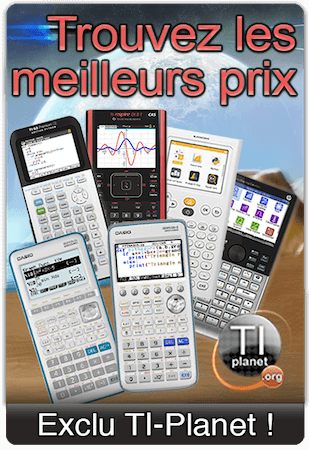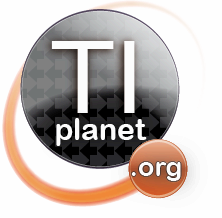NAAAAOOO
Hiérarchie des fichiers
| Téléchargements | ||||||
| Fichiers créés en ligne | (39312) | |||||
| TI-Nspire | (25781) | |||||
| mViewer GX Creator Ndless | (982) | |||||
DownloadTélécharger
Actions
Vote :
ScreenshotAperçu

Informations
Catégorie :Category: mViewer GX Creator Ndless TI-Nspire
Auteur Author: beybey7
Type : Document nécessitant un lecteur
Page(s) : 3
Taille Size: 162.42 Ko KB
Mis en ligne Uploaded: 15/11/2019 - 22:13:35
Uploadeur Uploader: beybey7 (Profil)
Téléchargements Downloads: 40
Visibilité Visibility: Archive publique
Shortlink : http://ti-pla.net/a2427655
Type : Document nécessitant un lecteur
Page(s) : 3
Taille Size: 162.42 Ko KB
Mis en ligne Uploaded: 15/11/2019 - 22:13:35
Uploadeur Uploader: beybey7 (Profil)
Téléchargements Downloads: 40
Visibilité Visibility: Archive publique
Shortlink : http://ti-pla.net/a2427655
Description
Sciences Po − Spring 2019 Financial Markets I
MSc Finance & Strategy Stéphane Guibaud
Problem Solutions for Lecture 6
1. (a) According to the CAPM, investors expect a return of
E(R) = Rf + M RP × β
= 2.5% + 6% × 1.25 = 10%.
(b) In general, given the definition of the one-period return, the expected return on
the security is given by
E(D1 ) + E(P1 )
E(R) = − 1,
P0
where P0 is today’s price, E(P1 ) is next year’s expected price, and E(D1 ) is next
year’s expected dividend. This allows us to obtain the expected future price E(P1 )
given E(R), E(D1 ) and P0 as follows:
E(P1 ) = (1 + E(R))P0 − E(D1 ).
In this question, we know that E(R) = 10%, E(D1 ) = 0 and P0 = $50. We get
E(P1 ) = $55.
(c) Now we have E(D1 ) = $3. We get E(P1 ) = $52.
2. (a) The statement is FALSE. The CAPM predicts that the expected return on a zero
beta asset is the same as the return on the riskless asset, which is generally not
zero. It is the expected excess return on a zero beta asset that is equal to zero.
(b) The statement is TRUE. The CAPM predicts that investors hold a combination
of the riskless asset and the market portfolio (which is the same as the tangent
portfolio in equilibrium). This is independent of the investors’ level of wealth or
risk aversion.
(c) The statement is TRUE. Stocks that go up a lot when the market goes up (and
down a lot when the market goes down) have high betas, and according to the
CAPM, should have high expected returns.
(d) The statement is FALSE. The investor’s return is
1 1
RP = RA + RB .
2 2
1
The beta of the portfolio is given by
Cov(RP , RM ) Cov(0.5RA + 0.5RB , RM ) 0.5Cov(RA , RM ) + 0.5Cov(RB , RM )
βP = = = .
V (RM ) V (RM ) V (RM )
Therefore the beta of the portfolio is
1 1 1 1
βP = βA + βB = × 0.7 + × 1.3 = 1.
2 2 2 2
(e) The statement is FALSE. The investor’s return is
1 2
Rf + RM .
3 3
Therefore the beta is
1 2 1 2 2
βf + βM = × 0 + × 1 = .
3 3 3 3 3
3. (a) Beta of stock A:
Cov(RA , RM ) 0.6 ∗ 0.2 ∗ 0.15
βA = = = 0.8.
V ar(RM ) 0.152
(b) If CAPM holds, the market risk premium satisfies E(RA ) = Rf + M RP × βA ,
therefore
E(RA ) − Rf 9% − 5%
M RP = = = 5%.
βA 0.8
(c) CAPM implies
E(RB ) = Rf + M RP × βB = 5% + (5% × 0.5) = 7.5%
(d) Stock B has more volatility (25% > 20%) but lower expected return (7.5% <
9%). This is possible because volatility is not the relevant measure of risk to
determine expected returns under CAPM. What is relevant is how stocks comove
with the market. The reason stock A has higher expected return despite having
lower volatility is that it has a higher beta (0.8 > 0.5), which ultimately comes
from higher correlation with the market (stock A has correlation 0.6, whereas the
correlation of stock B with the market implied by the given numbers is 0.3).
4. (a) We regress the excess returns on the stocks to the excess return on the S&P500.
The betas, estimated over the period Jan 1989-Dec 2012, are in the following
table:
2
Beta
Coca Cola 0.648
Disney 1.116
IBM 1.000
Xerox 1.571
DuPont 1.104
Kellogg 0.380
Pfizer 0.804
(b) The results, obtained over the period Jan 1989-Dec 2012, are in the following
table:
Alpha St. dev. of alpha St. dev. of id. risk
Coca Cola 0.0072 0.0033 0.0557
Disney 0.0043 0.0035 0.0590
IBM 0.0045 0.0040 0.0681
Xerox -0.0013 0.0059 0.0992
DuPont 0.0023 0.0032 0.0545
Kellogg 0.0041 0.0034 0.0581
Pfizer 0.0070 0.0036 0.0604
(c) According to the CAPM, Xerox should have the highest expected return (since it
has the highest beta) and Kellogg the lowest. The sample averages are as follows:
Beta Sample average (%)
Coca Cola 0.648 1.254
Disney 1.116 1.138
IBM 1.000 1.112
Xerox 1.571 0.757
DuPont 1.104 0.932
Kellogg 0.380 0.837
Pfizer 0.804 1.286
The CAPM predictions are not quite supported by the data, at least in this
sample of stocks and over this sample period. Xerox turns out to have the lowest
sample average. And the two stocks with the highest sample averages over the
period, Pfizer and Coca Cola, have rather low market beta. These two stocks
show significant alpha.
3
MSc Finance & Strategy Stéphane Guibaud
Problem Solutions for Lecture 6
1. (a) According to the CAPM, investors expect a return of
E(R) = Rf + M RP × β
= 2.5% + 6% × 1.25 = 10%.
(b) In general, given the definition of the one-period return, the expected return on
the security is given by
E(D1 ) + E(P1 )
E(R) = − 1,
P0
where P0 is today’s price, E(P1 ) is next year’s expected price, and E(D1 ) is next
year’s expected dividend. This allows us to obtain the expected future price E(P1 )
given E(R), E(D1 ) and P0 as follows:
E(P1 ) = (1 + E(R))P0 − E(D1 ).
In this question, we know that E(R) = 10%, E(D1 ) = 0 and P0 = $50. We get
E(P1 ) = $55.
(c) Now we have E(D1 ) = $3. We get E(P1 ) = $52.
2. (a) The statement is FALSE. The CAPM predicts that the expected return on a zero
beta asset is the same as the return on the riskless asset, which is generally not
zero. It is the expected excess return on a zero beta asset that is equal to zero.
(b) The statement is TRUE. The CAPM predicts that investors hold a combination
of the riskless asset and the market portfolio (which is the same as the tangent
portfolio in equilibrium). This is independent of the investors’ level of wealth or
risk aversion.
(c) The statement is TRUE. Stocks that go up a lot when the market goes up (and
down a lot when the market goes down) have high betas, and according to the
CAPM, should have high expected returns.
(d) The statement is FALSE. The investor’s return is
1 1
RP = RA + RB .
2 2
1
The beta of the portfolio is given by
Cov(RP , RM ) Cov(0.5RA + 0.5RB , RM ) 0.5Cov(RA , RM ) + 0.5Cov(RB , RM )
βP = = = .
V (RM ) V (RM ) V (RM )
Therefore the beta of the portfolio is
1 1 1 1
βP = βA + βB = × 0.7 + × 1.3 = 1.
2 2 2 2
(e) The statement is FALSE. The investor’s return is
1 2
Rf + RM .
3 3
Therefore the beta is
1 2 1 2 2
βf + βM = × 0 + × 1 = .
3 3 3 3 3
3. (a) Beta of stock A:
Cov(RA , RM ) 0.6 ∗ 0.2 ∗ 0.15
βA = = = 0.8.
V ar(RM ) 0.152
(b) If CAPM holds, the market risk premium satisfies E(RA ) = Rf + M RP × βA ,
therefore
E(RA ) − Rf 9% − 5%
M RP = = = 5%.
βA 0.8
(c) CAPM implies
E(RB ) = Rf + M RP × βB = 5% + (5% × 0.5) = 7.5%
(d) Stock B has more volatility (25% > 20%) but lower expected return (7.5% <
9%). This is possible because volatility is not the relevant measure of risk to
determine expected returns under CAPM. What is relevant is how stocks comove
with the market. The reason stock A has higher expected return despite having
lower volatility is that it has a higher beta (0.8 > 0.5), which ultimately comes
from higher correlation with the market (stock A has correlation 0.6, whereas the
correlation of stock B with the market implied by the given numbers is 0.3).
4. (a) We regress the excess returns on the stocks to the excess return on the S&P500.
The betas, estimated over the period Jan 1989-Dec 2012, are in the following
table:
2
Beta
Coca Cola 0.648
Disney 1.116
IBM 1.000
Xerox 1.571
DuPont 1.104
Kellogg 0.380
Pfizer 0.804
(b) The results, obtained over the period Jan 1989-Dec 2012, are in the following
table:
Alpha St. dev. of alpha St. dev. of id. risk
Coca Cola 0.0072 0.0033 0.0557
Disney 0.0043 0.0035 0.0590
IBM 0.0045 0.0040 0.0681
Xerox -0.0013 0.0059 0.0992
DuPont 0.0023 0.0032 0.0545
Kellogg 0.0041 0.0034 0.0581
Pfizer 0.0070 0.0036 0.0604
(c) According to the CAPM, Xerox should have the highest expected return (since it
has the highest beta) and Kellogg the lowest. The sample averages are as follows:
Beta Sample average (%)
Coca Cola 0.648 1.254
Disney 1.116 1.138
IBM 1.000 1.112
Xerox 1.571 0.757
DuPont 1.104 0.932
Kellogg 0.380 0.837
Pfizer 0.804 1.286
The CAPM predictions are not quite supported by the data, at least in this
sample of stocks and over this sample period. Xerox turns out to have the lowest
sample average. And the two stocks with the highest sample averages over the
period, Pfizer and Coca Cola, have rather low market beta. These two stocks
show significant alpha.
3












